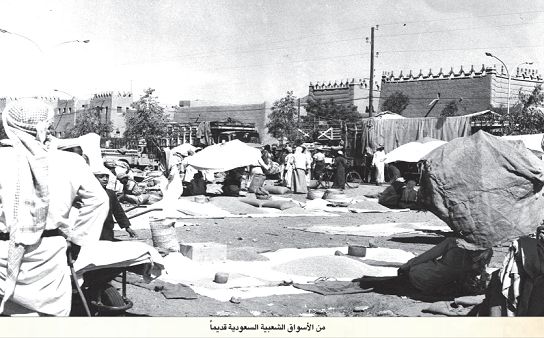Markets between the past and the present in the Asir region
on- 2021-12-23 10:53:36
- 0
- 832

The weekly local markets were established throughout the region, and the buying and selling operations in those markets were carried out in cash or term, according to the agreement and trust between the seller and the buyer, by the tribe, and he is the person chosen by both the buyer and the seller, as a guarantor for the buyer until he over the agreed amount.
Also, sales in these markets in the past were carried out through bartering, as if the buyer provided half a container of corn for a , a kilogram of fruit, and so on. These markets have also played a large role in getting to know each other, and documenting the old links and ties between friends from the various villages surrounding the market. The markets were once a local place to announce local news and announcements. Likewise, the old and new markets are considered a center for broadcasting the word of truth on the part of the preachers, in order to urge people to obey and avoid violations of the law of God. Through these markets, they displayed all agricultural products, all kinds of animal wealth, in addition to jewelry and other trade offers. And before the Saudi era, every tribe was protecting its market from any problems that might occur in it, and resolving it even if the matter required intervention to solve it with the usage of weapons.
There were a number of markets frequented by people and tribes, as well as by the residents of the villages near these markets. And the shops on both sides of the market, in the middle of a large yard, and those shops in the lower floors of mud houses and are often rented symbolic wages for tribal traders, and some traders from other tribes. As for the square, it was wandering sellers or merchants, who came from distant cities and places. In these markets there were side yards for sellers of camels, sheep, livestock and others.
As for the Saudi era, and in light of the renaissance that the Kingdom of Saudi Arabia is experiencing, and in light of the renaissance and progress in all fields, the establishment of security - thanks to God Almighty - that our dear homeland lives, the spread of transportation and the establishment of roads that link all the cities and villages of the Kingdom to each other, It had a great impact on facilitating the movement of people from one city to another, as well as the movement of trade and vendors to the main cities; that is why these markets have weakened, and then gradually .
These markets are:
- Bani –Besher Market
- Gomaat Al- Khalaf Market
- Al-Ethnain (Monday) Market
- Tuesday Market –Zahret Bani Besher.
The markets that are still operating are:
1- Khamees Obaidah Market
2- Al-Farsha Market
The process of deciding to establish a market anywhere in the past - before the Saudi era - required security and stability, and providing security and protection for market goers, which is required to establish such markets that were being protected by its people. For every village that has a market, village owners protect that market.
The market of (Khamis Ubaidah) was one of the oldest and largest of these markets, because it is located in the meeting point of a number of roads , and it is considered a major center, as it mediates all villages and tribes, in addition to being a crossing for all commercial caravans and pilgrims caravans whose way is pass through that region. Therefore, the decision to establish the market needed to study, the ability, strength and prestige of this market to preserve its position and importance, and guarantee people's money and lives.
The responsible persons interested in establishing this market have been able to provide what is necessary for its establishment, in terms of the strategic location and the necessary protection for it.
